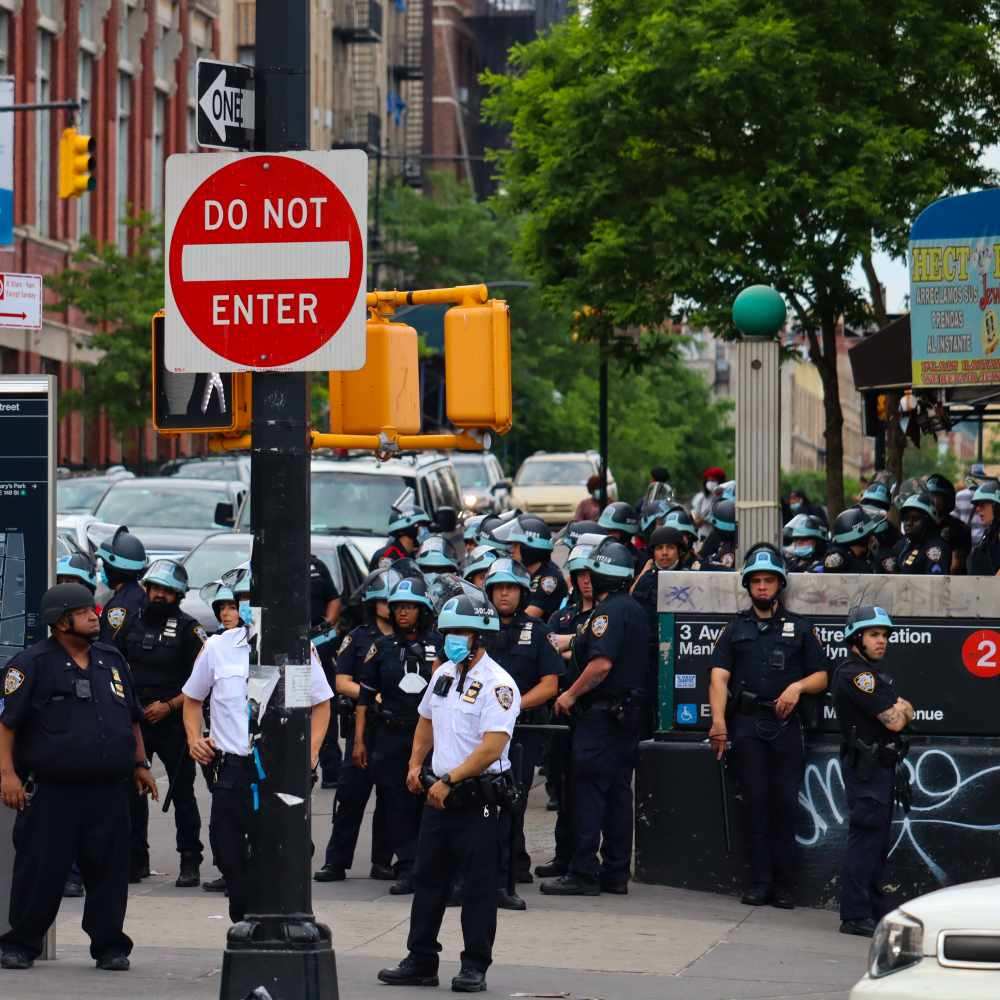The city’s Department of Investigation has released a report slamming the NYPD for its heavy handed approach toward participants in protests around the city during the first week in June, that stemmed from the murder of George Floyd by a police officer in Minneapolis. Some of the DOI’s most damning criticism is directed at law enforcement’s brutal treatment of protesters, medical volunteers and legal overseers during a peaceful protest in Mott Haven and Port Morris on June 4.
In addition, the report alleges that the NYPD’s inconsistencies in enforcing the mayor’s then-8 p.m. curfew led to confusion and increased public distrust of law enforcement, pointing out that police allowed protesters in Brooklyn and Manhattan to remain on the streets well past 8 during protests there, but came down violently on the Bronx group before curfew had set in.
The report also blasts NYPD for deploying officers to the protest, who “lacked sufficient recent training on policing protests,” and relied on “a disorder control approach,” pointing out that “The Mott Haven event on Thursday, June 4 represents the largest single set of curfew arrests at a Floyd protest.”
Although police intelligence “indicated the serious potential for violence and looting,” NYPD’s response was overzealous, the report concludes. At the June 4 protest, NYPD officers as well as members of its Strategic Response Group bicycle squad surrounded a group of several hundred at 136th Street and Brook Avenue a few minutes before 8, after the group had marched from The Hub. Officers cut off the streets so protesters couldn’t leave, then beat, cuffed and arrested them and “pushed, threatened, detained, and arrested (several medical volunteers) despite the fact that their clothing, documents, and actions clearly identified them as health workers whose sole purpose was rendering necessary medical care.”
Although NYPD’s concern over “hostile postings about police on social media, as well as reported incidents” outside the city had bearing, investigators say, “this approach came with significant costs. The force required to carry out a mass arrest was disproportionate to the identified threat, placed the burden of potential crime on a wide swath of people who had no apparent connection to that potential criminal activity, and severely damaged the Department’s legitimacy in the eyes of those present, the surrounding community, and (given the attention to these events) the City as a whole.”
“Mott Haven provides an illustrative example,” of how the NYPD overstepped its authority citywide, the report states, despite “actionable intelligence” based on the Bronx Borough Command’s concern that the FTP Coalition that organized the Mott Haven protest has a history of violence and property damage at protests, and that “social media posts purporting to be from organizers prior to the Mott Haven protest depicted flaming police vans and a graphic of a masked protester punching a cop.”
Police say their suspicions were compounded when they found hammers, fireworks, and lighter fluid in a vehicle they stopped near the Port Morris protest; arrested two men after finding knives, two bricks, a power saw, and two bottles of fuel injector in their vehicle; and recovered a firearm from an alleged gang member.
The report criticizes Mayor Bill de Blasio and Police Commissioner Dermot Shea for publicly announcing on June 5, the day after the protest, that the intelligence was justification for ordering the crackdown.
The Bronx borough commander told DOI that Bronx business leaders “pleaded with him for police to prevent looting,” after businesses on Fordham Road had been looted days earlier. That led him to focus on preventing protesters from “travelling into Manhattan and to prevent the group from splintering off towards commercial areas, including the Hub,” leading to the decision that “strict curfew enforcement through encirclement and mass arrests was the appropriate tactic.”
Video shows that police issued warnings over a loudspeaker just before 8 p.m.that the curfew was about to go into effect, but did not warn that non-essential workers would be subject to arrest.
Compounding the confusion, “inconsistent public messaging on curfew enforcement” undermined the effectiveness of a curfew as a means of deterring looters, while City Hall had issued public statements trying to reassure the public that curfew would not be enforced against “peaceful protesters.”
“Telling the public that peaceful protests could continue past the curfew, without consequence, undermined this goal considerably, further skewing the trade-off between public safety and public perception of First Amendment suppression,” the report states, leading to “needless confrontations between police and protesters and unfairly fueled public perceptions that the NYPD was abusing its authority.”
The day the DOI released its report, a troubled looking Mayor de Blasio released a nearly seven-minute video, agreeing with its findings, analysis and recommendations “because it makes very clear we got to do something different, and we got to do something better.”

